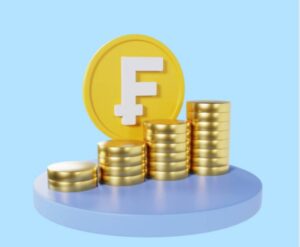
Renovation loan interest rates are projected to follow a downward trend in 2025, offering better opportunities for homeowners looking to update their properties. After the fluctuations of previous years, many financial analysts predict more favourable conditions for borrowers seeking home improvement financing. This shift is welcome news for those planning renovations in the coming year.
Current rate landscape
Interest rates for renovation loans range between 6.25% and 7.75%, depending on loan type, term length, and borrower qualifications. These rates reflect recent Federal Reserve policies to balance economic growth with inflation control. Conventional renovation loans typically carry rates about 0.5% higher than standard mortgages due to the additional risk and administrative work. Government-backed renovation options like FHA 203(k) loans tend to offer more competitive rates for qualified borrowers, though they include mortgage insurance premiums that affect the overall cost. The premium structure makes these loans particularly advantageous for those with lower credit scores or smaller down payments who might otherwise face higher rates in the private market.
Factors that will drive 2025 rates
Several economic indicators suggest renovation financing could become more affordable in 2025. The Federal Reserve has signalled multiple rate cuts yearly as inflation rises. Housing market stabilisation and increased competition among lenders may contribute to more favourable loan terms. Global economic conditions will also play a role in determining how low rates might go. Supply chain improvements have reduced construction costs, indirectly influencing how lenders price renovation products. Labour market conditions in the construction industry have also stabilised, removing another source of upward pressure on renovation costs and, by extension, loan pricing.
Regional variations to consider
Homeowners in different parts of the country will experience varying rate environments. In New England, including renovation loans in Connecticut, rates tend to track slightly below the national average due to the region’s intense lender competition and relatively stable property values. This regional advantage may become more pronounced as national rates decline. The Northeast housing market’s resilience creates a favourable environment for renovation financing compared to more volatile markets. Connecticut’s mix of urban, suburban, and rural properties presents diverse renovation needs that lenders have adapted to serve with specialised loan products, often at competitive rates to capture market share.
How does the loan type affect your rate?
Different renovation loan options come with distinct rate structures:
- Construction-to-permanent loans: Often start with higher variable rates during construction, converting to lower fixed rates after completion
- Home equity loans: Currently offering fixed rates around 7.0-8.5% with potential decreases expected
- FHA 203(k) loans: Available at approximately 6.0-7.5% with additional mortgage insurance costs
- Conventional renovation loans: Typically priced at 6.5-8.0% based on borrower qualifications
- Portfolio loans: Rates vary widely, but expect decreases in line with other products
Lenders assess risk differently for cosmetic updates versus structural changes, translating to 0.25-0.75% rate variations for otherwise identical borrower profiles.
Credit score impact on 2025 rates
Your credit profile will remain crucial in determining renovation loan rates in 2025. Expected rate ranges by credit tier include:
- Excellent (740+): Potential for rates starting at 5.75-6.25%
- Good (700-739): Likely range of 6.25-6.75%
- Fair (660-699): Approximate range of 6.75-7.5%
- Challenging (620-659): Projected rates of 7.5-8.5%
- Below 620: Limited options, potentially 8.5%+ if available
These projections assume the expected Federal Reserve rate cuts materialise as anticipated. Even borrowers with less-than-perfect credit may benefit from the general downward trend, though their rates will remain higher than those offered to borrowers with excellent credit.
Their expertise becomes especially valuable in a changing rate environment where small details can significantly affect loan affordability.







